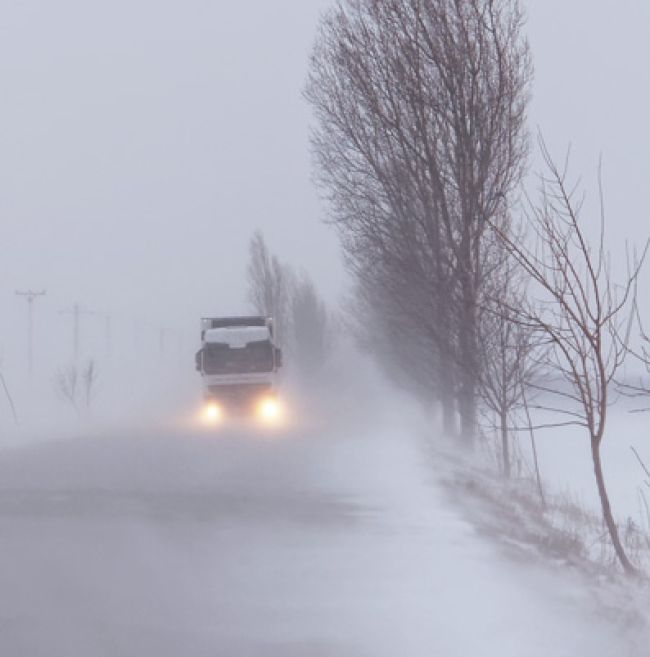
What’s Your Fleet’s Plan to Prepare for Winter Weather?
In some parts of the country, the leaves are already changing color and there’s a nip in the air. Fall is here and winter is not far behind, which means time is slipping away for utility fleet managers to winterize their fleet assets before truly cold weather sets in.
Forgive Tom Jansen, superintendent of fleet maintenance for Minnesota Power, for being nonchalant about the impending weather. Despite the harsh winter conditions in Minnesota – home of four of the country’s 15 coldest cities, according to USA Today – Jansen’s fleet is prepared for whatever Mother Nature might throw at it. Cold? Bring it. Ice? Ready. Winter Storm Colbert, which The Weather Channel announced would be the third named storm of the coming season? He laughs.
For Jansen’s 600-unit fleet – which includes Class 3-8, off-road and mobile assets – winterizing isn’t contained to a few months of the year. “While there are activities performed just prior to winter to help the fleet stay operating effectively, we’ve found success with focusing on a good year-round preventive maintenance program, purchasing practices and operator training,” he said.
That means using oils and lubricants that are effective throughout the year, installing solar battery chargers on all new trailers and off-road equipment, and ensuring that equipment purchased has block heaters and battery disconnects. The result: a reduced winter preparation workload.
This type of preventive maintenance is a good practice for any utility fleet. According to Don Scare, senior consultant, commercial truck solutions for Element Fleet Management (www.elementfleet.com), “Preventive maintenance covers a lot of the general checks that you do throughout the year, like batteries and belts.”
Meeting Seasonal Demands
Still, there are maintenance tasks that only make sense in the winter months. Scare and Jansen offer the following tips to help utilities ready their fleets to meet the demands of the season.
Diesel engines take more prep. All the diesel engines in Jansen’s fleet receive additives to help with winter weather, while some Minnesota Power service centers in the northernmost part of the state switch to a different type of diesel, a winter blend called #1 or 1-D. Scare said this also is a good time to “make sure that fuel tanks are clean of any condensation and water so that sumps in the bottom of the tanks are clean.” In addition, remind drivers to keep tanks full. “Condensation can build up with extreme up and down temperatures, and water freezes up,” Scare added.
Speaking of water, be sure to check equipment such as aerial devices and generators to ensure there is no water in the reservoir tanks or hydraulic oil tanks, Scare said. This also is an appropriate time to make sure that air tanks and air brakes are dry and serviced for the season.
Get back in good habits … During warmer weather, drivers and fleet maintenance staff get out of the habit of plugging in vehicles, Scare said. “Block heaters are very important, especially on diesel trucks,” he said. “Make it a habit to follow that process throughout the winter months, whether that is a mild or extreme winter.” Jansen said to make sure to test block heaters in advance to verify they’re working properly.
… And break a bad habit. Scare said fleets need to defeat the idea that the solution for diesel engines is to let them idle. “That’s a no-no with today’s technology,” he said. “The particulate filter starts to plug up when it idles for a long time, and it doesn’t have an opportunity to regenerate itself. That requires the vehicle to heat up and burn off that soot and ash.” For fleets that must leave a vehicle running to complete work, remind drivers to step up the RPMs.
Don’t forget the tires. Inspect tire chains before they are put on vehicles, Scare recommended. “Make sure all links are in place and ready for the vehicle, that they fit and drivers are instructed on proper usage.” And make sure drivers are reminded about proper tire inflation, which is particularly important as weather swings from warm to cold.
Develop and implement a year-round maintenance plan. That includes keeping in mind any summer-use-only vehicles that must be prepped for winter storage.
There is a lot to remember in order to properly prepare a utility fleet for the winter. Jansen suggested setting recurring PM schedules “to be based off the calendar. Oil changes are still performed as needed, but our system schedules the PM. While the workload is balanced throughout the year, equipment that is primarily stored outside or equipment that requires additional work to prep for winter is scheduled in the fall.”
Ultimately, he believes that winter preparation is something that occurs throughout the year with a goal of increasing equipment uptime and reducing reactive work in the winter.
About the Author: Sandy Smith is a freelance writer and editor based in Nashville, Tenn.
*****
Don’t Forget Another Important Part of Winterizing
Drivers have an important role to play when it comes to winterizing the fleet, but they shouldn’t neglect to prepare themselves for winter, too.
Don Scare, Element Fleet Management’s senior consultant, commercial truck solutions, suggested helping drivers prepare for conditions by making sure they have:
- Personal wear to handle inclement weather.
- Supplies, including water, in case they get stuck in the elements.
- Fresh batteries in flashlights.
- Tools that can help them get back on the road if they break down.

